
Sacca San Biagio
An uninhabited island southwest of Venice, full of vegetation, wild, totally untouched, without buildings. With only one problem, access.
Facilitating accessibility to this island is the goal of this project. The opportunity to bring visitors closer to an inaccessible Venice through a unique and sensational experience that will leave no one indifferent.
This project takes into account the naturalness of the island and wants to become an extension of the unspoiled character of the area, creating uncertainty about what is outside and what is inside and integrating the whole piece in the vegetation.
The connection between the island of Sacca San Biagio and the residential area of Sacca Fisola takes place in a continuous and fluid way through two accesses that lead to the same point. This piece made bridge, is a materialized extension of a grotto, a grotto that wants to be inhabited.
The natural geometry of this project was possible thanks to the use of artificial intelligence together with the elaboration of experimental models. Plaster, water and earth were the materials used. We started by using the earth as a formwork for the plaster and we observed the different textures that this generated, we played with the overlapping of the pieces, different positions and combinations. The naturalness with which these irregularities were generated awakened my interest in creating spaces inside. Therefore, 5 pieces were placed and combined in such a way that they were integrated into the location.
The turning point of this project was the visit to Ensamble's studio, the leap in scale from the models to reality forces a different translation of structures, the solution? A set of longitudinal metal trusses every 10 meters and transverse trusses every 5 meters with higher density in the areas that require it. These support the floor slabs, also metallic, and the in-situ shotcrete covering. This rocky covering, joined by means of brackets to a substructure welded to the trusses, appears both inside and outside and is what gives it the roughness of the rock. In addition, it hides the trusses and all the interior installations from the view of visitors. Its supports that are directly attached to the foundation make it possible to cover the 90m span of the channel that separates the two islands.
In the first part of the bridge, there is a market of organic products brought from small Italian farmers who are on the coast near the big island of Venice, with the intention of increasing the consumption of these products bringing them within the reach of any inhabitant.
In the second part, already on the island of Sacca San Biagio, there is a restaurant overlooking the robust landscape of that island, the big island of Venice, and the event area that is integrated into the irregularity of the piece. This semi-covered space, surrounded by vegetation, is intended for events with large numbers of people, thus encouraging people to visit the island.
The naturalness of the island continued by the rocky piece added to these programs that create an atmosphere of integration makes this project not to occupy space but create it.
Facilitating accessibility to this island is the goal of this project. The opportunity to bring visitors closer to an inaccessible Venice through a unique and sensational experience that will leave no one indifferent.
This project takes into account the naturalness of the island and wants to become an extension of the unspoiled character of the area, creating uncertainty about what is outside and what is inside and integrating the whole piece in the vegetation.
The connection between the island of Sacca San Biagio and the residential area of Sacca Fisola takes place in a continuous and fluid way through two accesses that lead to the same point. This piece made bridge, is a materialized extension of a grotto, a grotto that wants to be inhabited.
The natural geometry of this project was possible thanks to the use of artificial intelligence together with the elaboration of experimental models. Plaster, water and earth were the materials used. We started by using the earth as a formwork for the plaster and we observed the different textures that this generated, we played with the overlapping of the pieces, different positions and combinations. The naturalness with which these irregularities were generated awakened my interest in creating spaces inside. Therefore, 5 pieces were placed and combined in such a way that they were integrated into the location.
The turning point of this project was the visit to Ensamble's studio, the leap in scale from the models to reality forces a different translation of structures, the solution? A set of longitudinal metal trusses every 10 meters and transverse trusses every 5 meters with higher density in the areas that require it. These support the floor slabs, also metallic, and the in-situ shotcrete covering. This rocky covering, joined by means of brackets to a substructure welded to the trusses, appears both inside and outside and is what gives it the roughness of the rock. In addition, it hides the trusses and all the interior installations from the view of visitors. Its supports that are directly attached to the foundation make it possible to cover the 90m span of the channel that separates the two islands.
In the first part of the bridge, there is a market of organic products brought from small Italian farmers who are on the coast near the big island of Venice, with the intention of increasing the consumption of these products bringing them within the reach of any inhabitant.
In the second part, already on the island of Sacca San Biagio, there is a restaurant overlooking the robust landscape of that island, the big island of Venice, and the event area that is integrated into the irregularity of the piece. This semi-covered space, surrounded by vegetation, is intended for events with large numbers of people, thus encouraging people to visit the island.
The naturalness of the island continued by the rocky piece added to these programs that create an atmosphere of integration makes this project not to occupy space but create it.


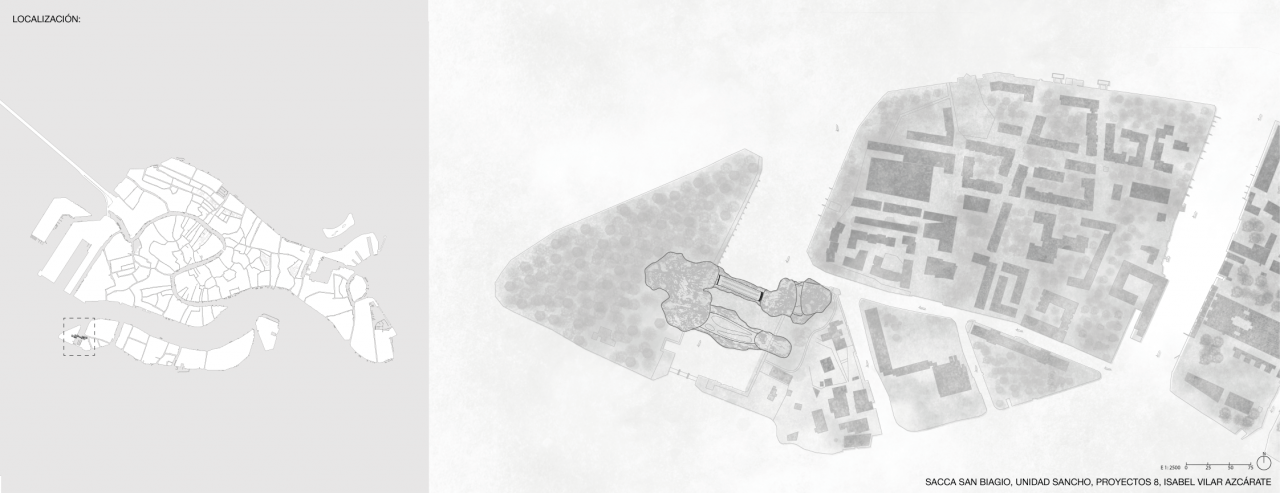


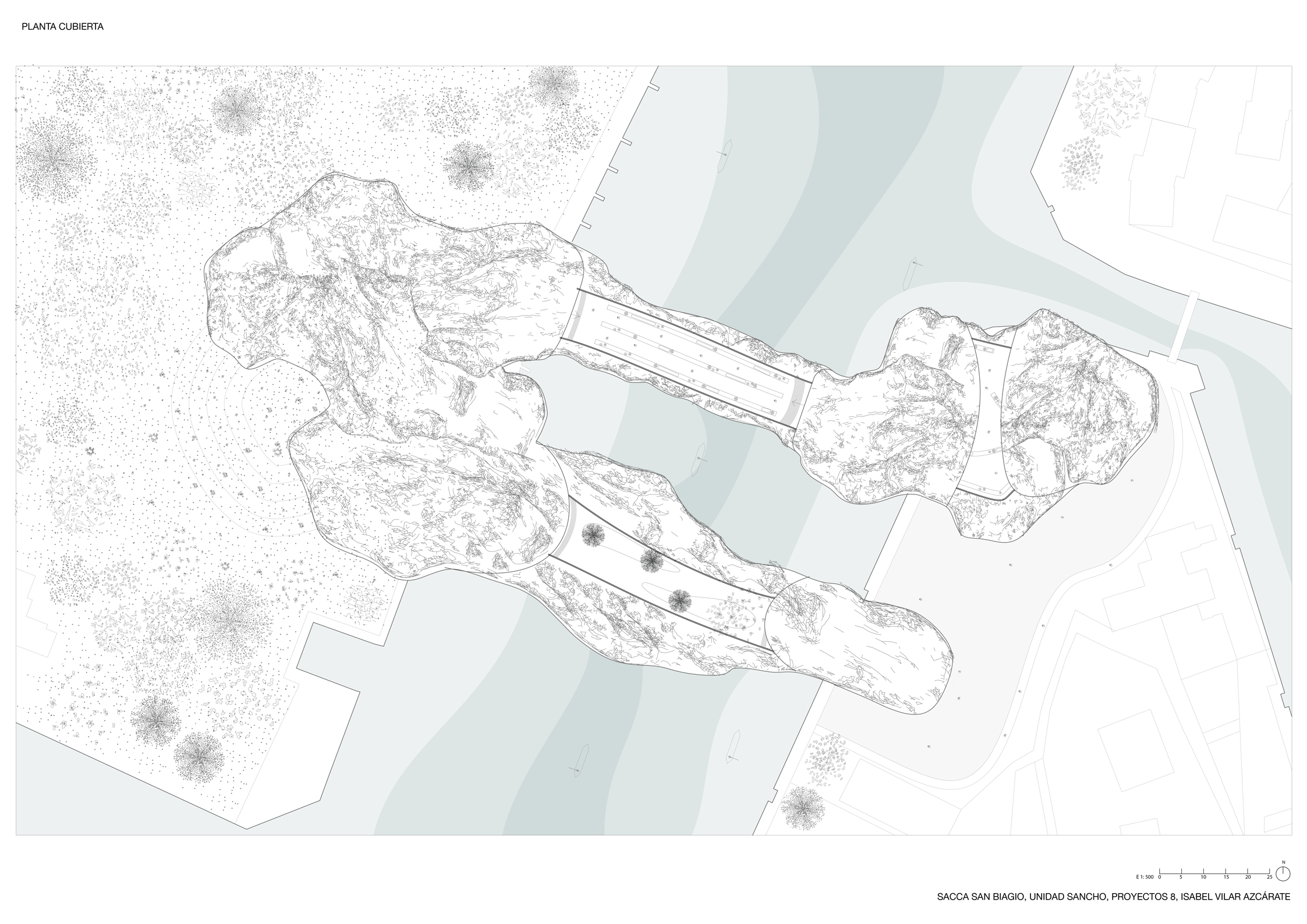

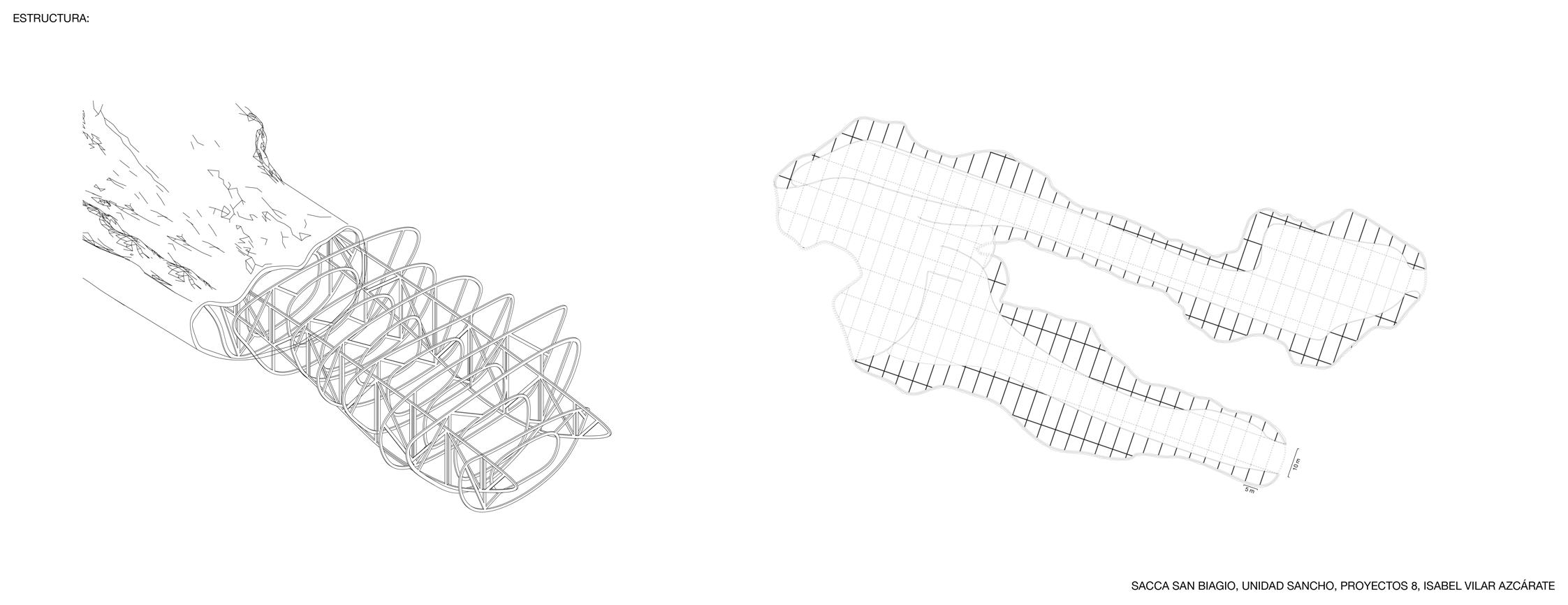
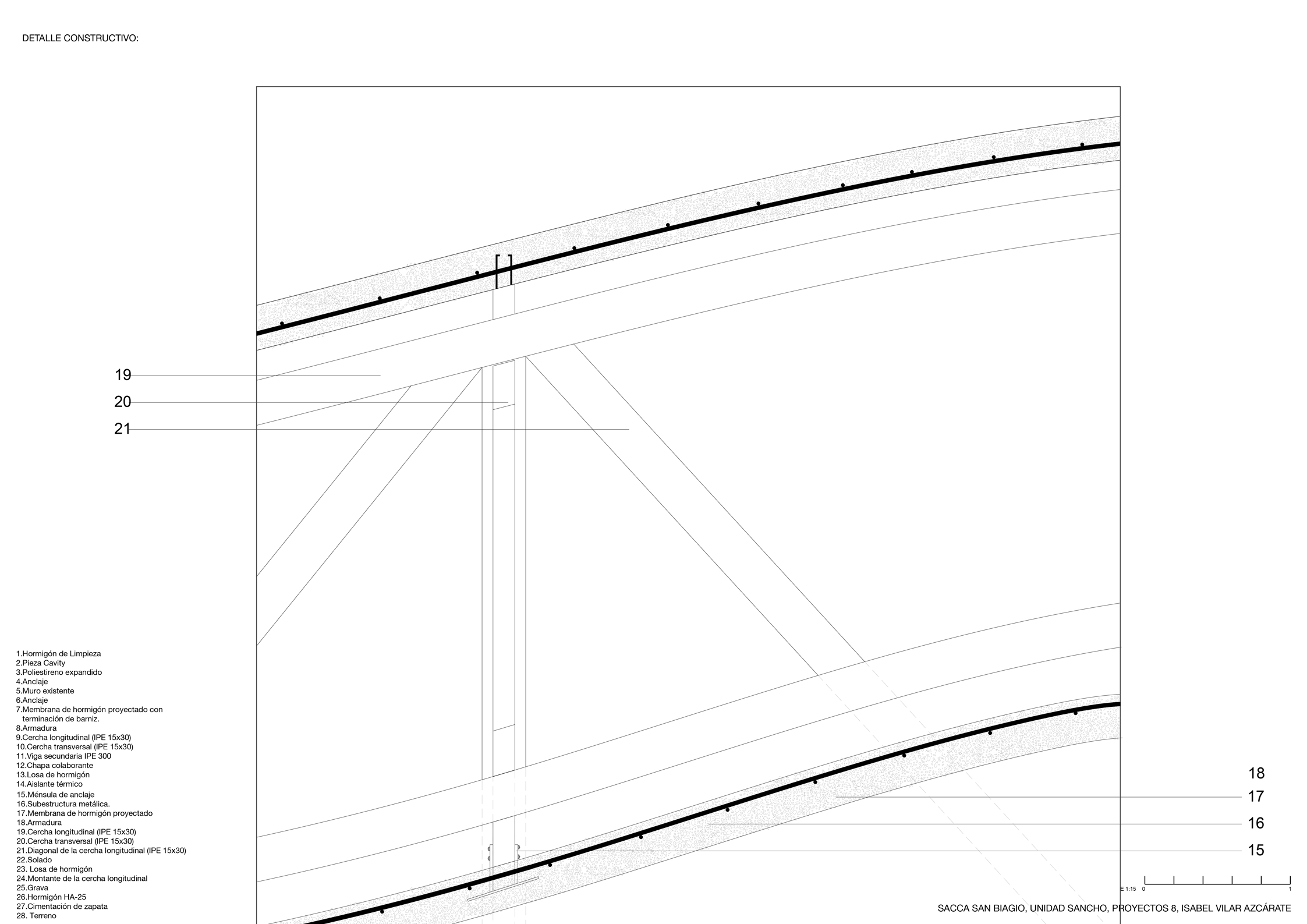
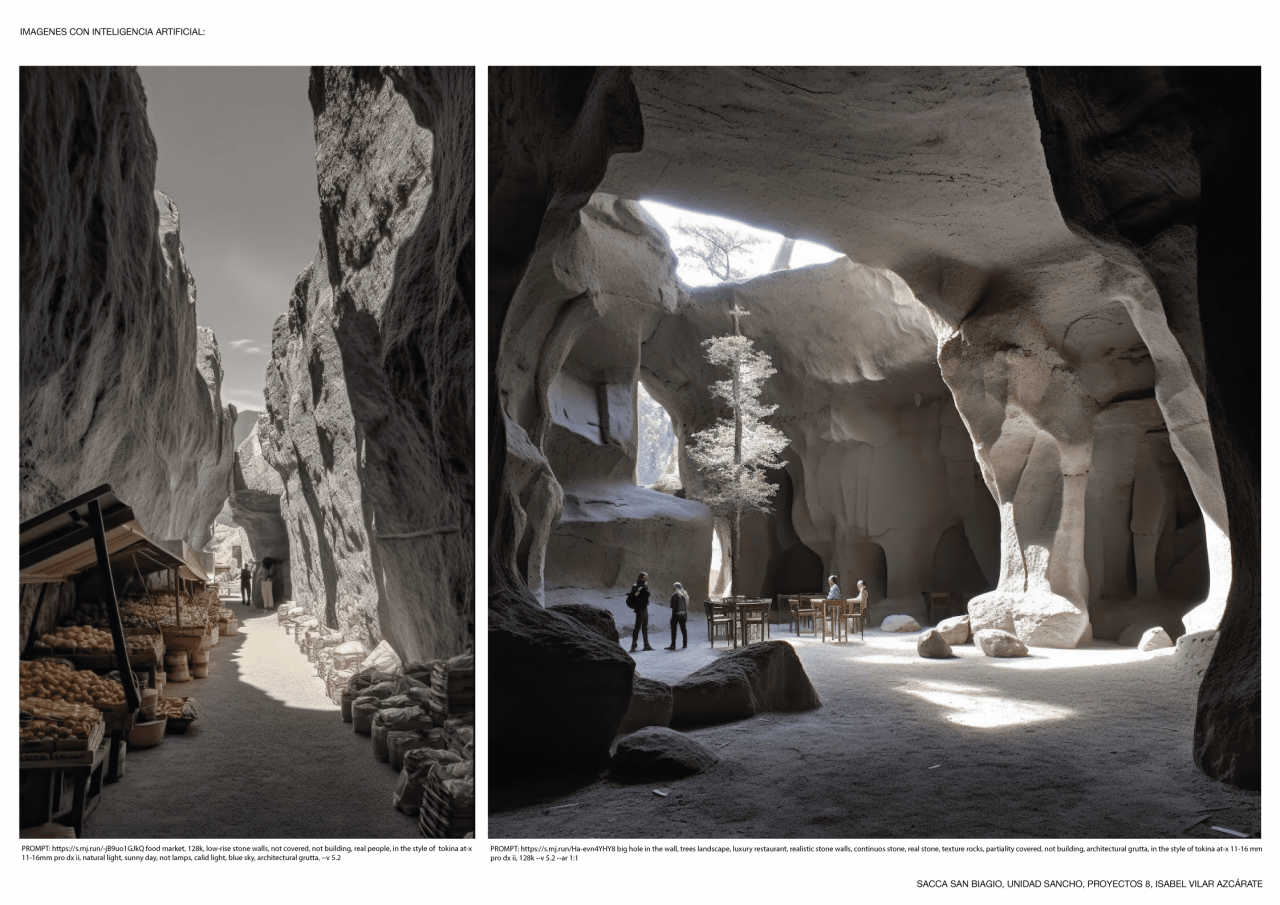
- 00 - Description
- 01 - 1- Collage
- 02 - 2- Models
- 03 - 3- Location
- 04 - 4- Sections
- 05 - 5- Collage
- 06 - 6- Floor plans
- 07 - 7- Sections
- 08 - 8- Structure
- 09 - 9- Details
- 10 - 10- AI images
- 11 - Video